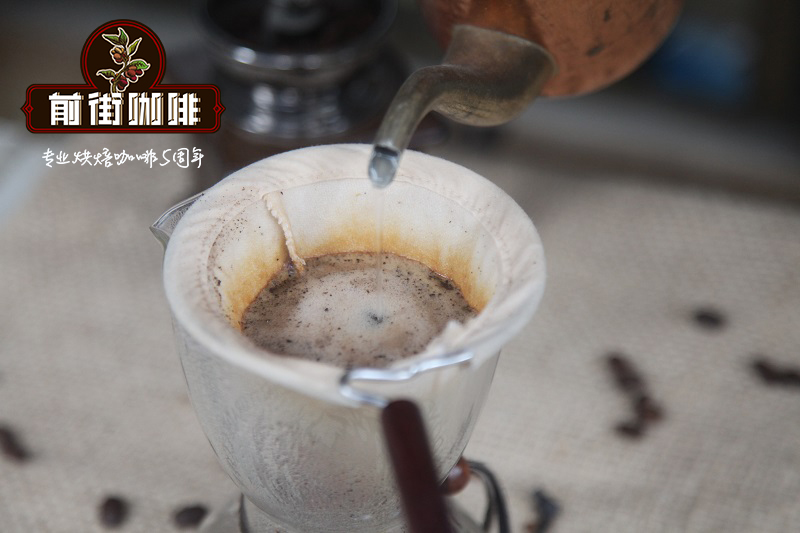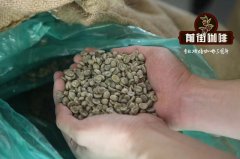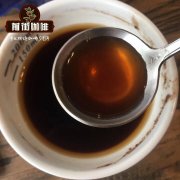Why do Indonesian coffee beans need to be wet planed? How does the flavor of wet planed coffee beans

Professional coffee knowledge exchange more coffee bean information please follow the coffee workshop (Wechat official account cafe_style)
Do you really understand the meaning of "wet planing"?
The humidity in Indonesia is 70%, 90%, and 90% throughout the year. Typhoons are common in some areas and rainfall exceeds 2000 mm a year.
Why is the rate of defective coffee produced in Indonesia so high? How does nature endow them with extremely strong and mellow details?
If your answer to any of these questions is yes, then reading this article may enlighten you. This article covers all the procedures, advantages and disadvantages of the "wet planing method" of Indonesian coffee, as well as its significance to coffee roasters and blenders.
What on earth is the "wet planing" of ●?
Before all coffee is roasted and consumed, it must be processed from coffee fruit to dried green beans. There are many ways to convert coffee from coffee fruit to dried green beans, but they can all be classified into three categories: Natural, Wet Processing, and Honey Processing. "Wet planing" is one of the methods for peeling coffee seeds, and it is also a traditional method used in Indonesia. Although the treatment method is similar to the "washing method", the nature of the two is completely different. So don't confuse wet planing with washing.
What is the processing flow of ● "wet planing coffee beans"?
Inside each coffee cherry (Coffee Cherry), there are coffee seeds (Green Bean), silver peel (Silver Skin), endocarp (Parchment) (also known as endocarp), gelatinous pulp (mucilage) and exocarp (Pannexterna).
Hulling actually refers to the removal of endocarp (Parchment) to obtain raw beans.
The first step of ●:
Remove the exocarp. After removing the red exocarp of the coffee fruit, the seeds are still wrapped in endocarp and gelatinous pulp. At this time, fermentation should be carried out first, usually in a pool or plastic bag overnight. This helps to break down the pectin in the gelatinous pulp, making it easier to remove the pulp in the next washing step.
Step 2 of ●:
The next day, the coffee fruit fermented overnight needs to be washed to remove the gelatinous pulp. A large amount of water is used in the washing process, and if the coffee farm does not have enough water, the coffee that has been fermented for the first time with pulp will be sent to the processing plant for washing. After the washing process, we get "wet beans with inner shell" (Wet Parchment Coffee).
Step 3 of ●:
The "wet beans with inner shell" obtained after washing should be dried for 2-3 days according to the sun and humidity (not more than 3 days), so that the water content can be reduced to 20%, 24%, during the drying period, achieving the hardness required to remove the inner shell. So far, there seems to be no difference between "wet planing" and washing. If you choose to continue washing the coffee, then these "wet beans with inner shell" will continue to dry until the water content is reduced to 11%. This will make the endocarp shell (Parchment) brittle and can be easily removed during the shelling process. However, if you choose to use the "wet planing method" to remove the shell of the "wet bean with inner shell", it means that the shell process should be carried out when the water content is still 20%, while the "wet bean with inner shell" is still very soft and the inner shell is only semi-dry, so it is necessary to use a special peeling machine (Huller) for the wet planing method, because the semi-dry endocarp shell needs to be removed by greater friction.
As you can imagine, using the "wet planing" method to remove the endocarp shell is not as clean as the dry grinding process. High water content means that there is not enough separation between the endocarp and the coffee seed (Green Bean), so the treated raw beans usually have residual endocarp. Be very careful throughout the shelling process. If you touch it a little hard, the wet and soft coffee beans will break.
Due to the relatively low density of coffee beans, it is easy to crack beans and become defective after the shelling process. This kind of split bean is called "kuku kambing" or "goat's hoof".
Step 4 of ●:
Continue to dry the shelled raw bean (Hulled Beans) until the water content is reduced to 12% Murray 13%. During the day, raw beans are exposed to the sun in the bean drying farm, but at night they must go into the warehouse and be bagged before fermenting.
It's going to be repeated for a few more days. After the final drying process is completed, the water content of raw beans reaches the finished product standard, and the raw beans are dark green at this time. At this time, the coffee can be packed and ready for export.
Why has ● "wet planing" become a traditional processing method in Indonesia?
Wet planing has become the main method of coffee treatment in Indonesia for two reasons: history and environment. Coffee was first introduced to Indonesia by Dutch colonists in 1699 for economic gain. From their profit-oriented point of view, the longer the coffee stays on the farm, the greater the loss. At the same time, the use of "wet planing" after coffee picking can greatly shorten the time required for coffee processing, they can see the benefits more quickly, but also reduce labor costs.
However, even if the Dutch do not proceed from a profit point of view, they may have to adopt the "wet planing" method to process coffee, because the extremely humid climate can make the whole process challenging. The drying process of coffee takes about 2-3 weeks in warm climates. Most parts of Indonesia have high rainfall and humidity.
If the common processing method is used, the time will be longer. During this period, there are enough bacteria to spoil coffee beans before they are dry enough. The inner shell of coffee can provide protection for coffee beans and make the coffee beans in a more stable state when dry, so the common processing method is to dry before shelling. The "wet planing method" is to remove the endocarp shell before drying, although it has to bear the risk of high defective rate, but the heat of sunlight can directly act on the shelled raw beans, so the drying time can be shortened by 2-3 times.
What's the flavor of wet-shaved coffee beans?
Indonesian Wet Planer Coffee is very famous because it has a full and mellow background and a more dense taste, even reminiscent of tobacco addiction, while having a certain degree of sweetness and acidity. People always have different voices about Indonesian coffee. They think that Indonesian coffee is of ordinary quality and unstable in taste.
● Why are Indonesian wet planing coffee beans like this?
First of all, the processing speed of "wet planing" is fast, and the quality may not be stable enough. More importantly, high-quality equipment is scarce in Indonesia, and wet beans are often dried on concrete terraces, mud floors, and even roads. This is obviously not the best condition for drying coffee. In some coffee-producing countries, the demand for high-quality coffee is increasing, which is also driving the transformation of processing methods.
In Indonesia, the situation is different. Indonesian coffee is mostly used for blending and is also sold to mediocre commercial coffee shops. Therefore, producing high-quality coffee does not seem to be good for the local people. But there are some exceptions. The number of coffee farms is slowly growing, especially in Sumatra and Sulawesi, where coffee farmers have begun to step up care of coffee beans.
What is the significance of ● Indonesian wet planing coffee beans to bakers and brewers?
Roaster: the most important thing for a coffee roaster is that even if wet shaved coffee is often so unstable and fraught with shortcomings, why should we bake it?
The answer is its mellow heritage. Indonesian coffee is popular because a small amount of mixing can greatly improve the level and thickness of coffee. Even mixing only 10% of Indonesian wet shaved coffee will have a great impact on the taste of the whole cup of coffee. However, it is worth noting that mixing too many Indonesian wet shaved coffee beans will make the brewed coffee produce an earthy taste (Earthy). In order to find the most appropriate proportion, it depends on the bakers to constantly explore and try.
Wet shaved coffee beans are more difficult to bake than other coffee beans. One of the most important steps in roasting coffee is to dehydrate the beans to make sure they burst at the right time. The water content of wet shaved coffee beans is generally 10.7% Murray 11%. This moisture difference of about 1% means that wet shaved coffee takes longer to dehydrate when roasting coffee. If dehydration is not done well, the coffee will taste inconsistent, uneven and over-sour. Another important point for making Blending coffee is to roast the coffee one or more deeply to balance the maturity of other beans. The easiest way is to roast different coffees separately.
Engineer: please keep one thing in mind. The Body of wet shaved coffee is very thick. When extracting, the water temperature should be slightly lower and the brewing time should not be too long, so as not to destroy the mellow layering of the coffee. Try to balance the taste of coffee to highlight the advantages of coffee.
Qianjie coffee: Guangzhou bakery, the store is small but a variety of beans, you can find a variety of unknown beans, but also provide online store services. Https://shop104210103.taobao.com
Important Notice :
前街咖啡 FrontStreet Coffee has moved to new addredd:
FrontStreet Coffee Address: 315,Donghua East Road,GuangZhou
Tel:020 38364473
- Prev

Why is the color of washed coffee beans turquoise? what varieties of washed coffee beans are recommended?
Professional coffee knowledge exchange more coffee bean information please pay attention to the coffee workshop (Wechat official account cafe_style) complete washing (Washed): the use of washing and fermentation methods to remove the skin, pulp and mucous membrane, the use of water washing on the farm must build a wash pool, and can introduce a continuous supply of live water. When dealing with it, the beans that are mellow are put into the pool and passed back and forth.
- Next

Introduction to wet planing of coffee beans. Characteristics of wet planing of coffee beans. Is the coffee good?
Professional coffee knowledge exchange more coffee bean information please follow the coffee workshop (Wechat official account cafe_style) Today the editor will introduce to you a method of treatment that we have not heard of very often. ● wet planing (Giling Basah) this is a coffee processing method exclusive to Indonesia and two or three surrounding coffee-producing countries. Giling Basah is Indonesian and literally translated as scraped off under wet conditions.
Related
- What is the meaning of lactic acid fermentation with coffee bean treatment?
- How to judge the state of foam by sound?
- How does the latte pull out the unicorn pattern? Come to get for a little trick to improve the flower pull!
- Will flower pulling affect the taste of the latte?
- Do you know the history of coffee?
- The difference between honey treatment and sun washing what is raisin honey treatment?
- What kind of milk can a novice use to make coffee foam to keep the foam longer? The correct method and skills of milking tutorial sharing
- Why do washed coffee beans taste sour? Flavor characteristics of washed Coffee
- Introduction to the skill of how to practice the size and height of water injection around the circle of hand-brewed coffee
- How do beginners practice coffee flower drawing from scratch?

